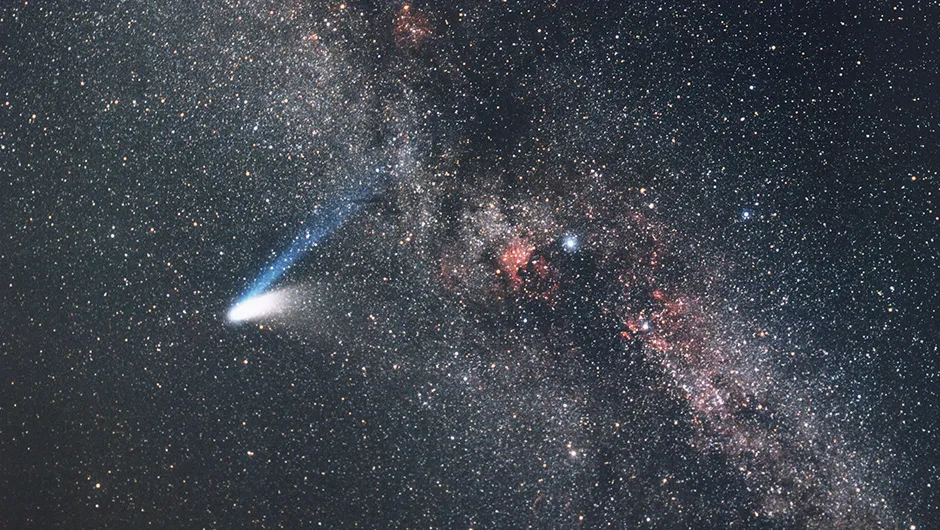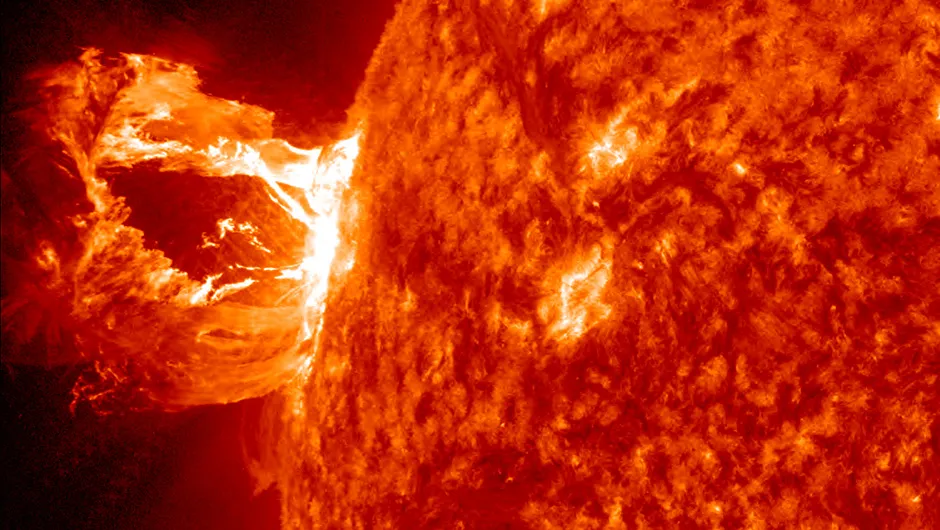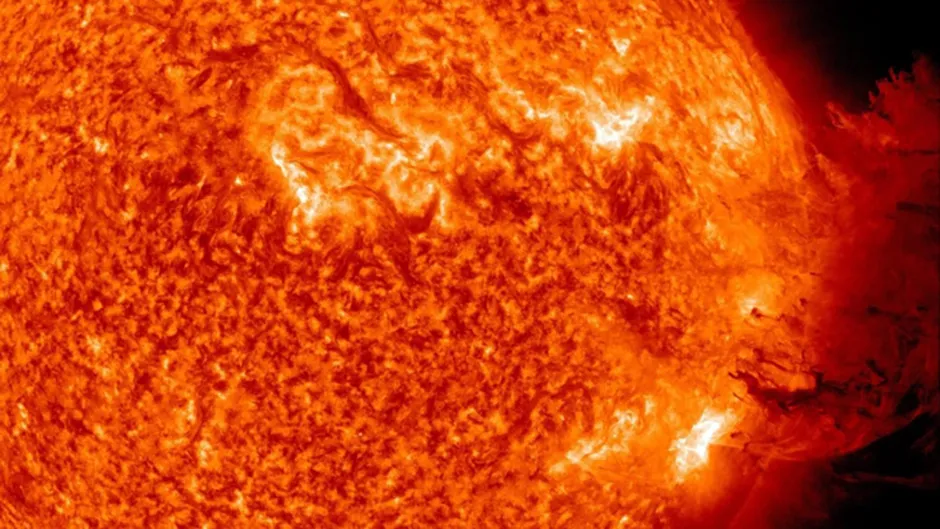An image of comet Hale-Bopp reveals the comet's plasma tail (in blue). Credit: ESO/ Eckhard Slawik
A picturesque snap of a comet gracing our night sky might reveal more about our Solar System than it may at first seem.
Astronomers from the Mullard Space Science Laboratory, in the UK, have used amateur images of comets to study the Sun – enabling them to examine what our star was up to when the pictures were taken.
“One of the really interesting things about comets is that they have two tails.
They have a dust tail and a plasma tail.
The plasma tail is created by the solar wind.
So by studying amateur images of a comet’s plasma tail we can work out what the solar wind is doing,” says Yudish Ramanjooloo, a postgraduate student at MSSL who gave a presentation about the technique at the National Astronomy Meeting today.

The technique has allowed the team to study the speed of the solar wind at the time the pictures were taken as well as see when transient events, such as coronal mass ejections, interact with the comets themselves.
“We’ve been able to tell when a CME hits a comet, which gives us an idea of how fast the CME was going at the comet’s location,” says Ramanjooloo.
Remarkably – by using this technique with old images of comets – the team may be able to find out about the Sun’s behaviour long ago, before the age of orbiting solar observatories.
“There are photographic plates dating back at least a hundred years.
We hope they will give us snapshots of what was happening in the Solar System at those times.
But there aren’t as many images [from then] so it could be quite hard to tell exactly what was happening,” says Ramanjooloo.

“So far we have only looked at one solar cycle.
The next step is to extend that and look at many solar cycles and see what we can get out of this.”

The team’s work relies on a supply of amateur images of comets, so if you have an astrophoto of a comet that you’ve taken Yudish is keen to hear from you.
He can be contacted by email at yr2@mssl.ac.uk .
